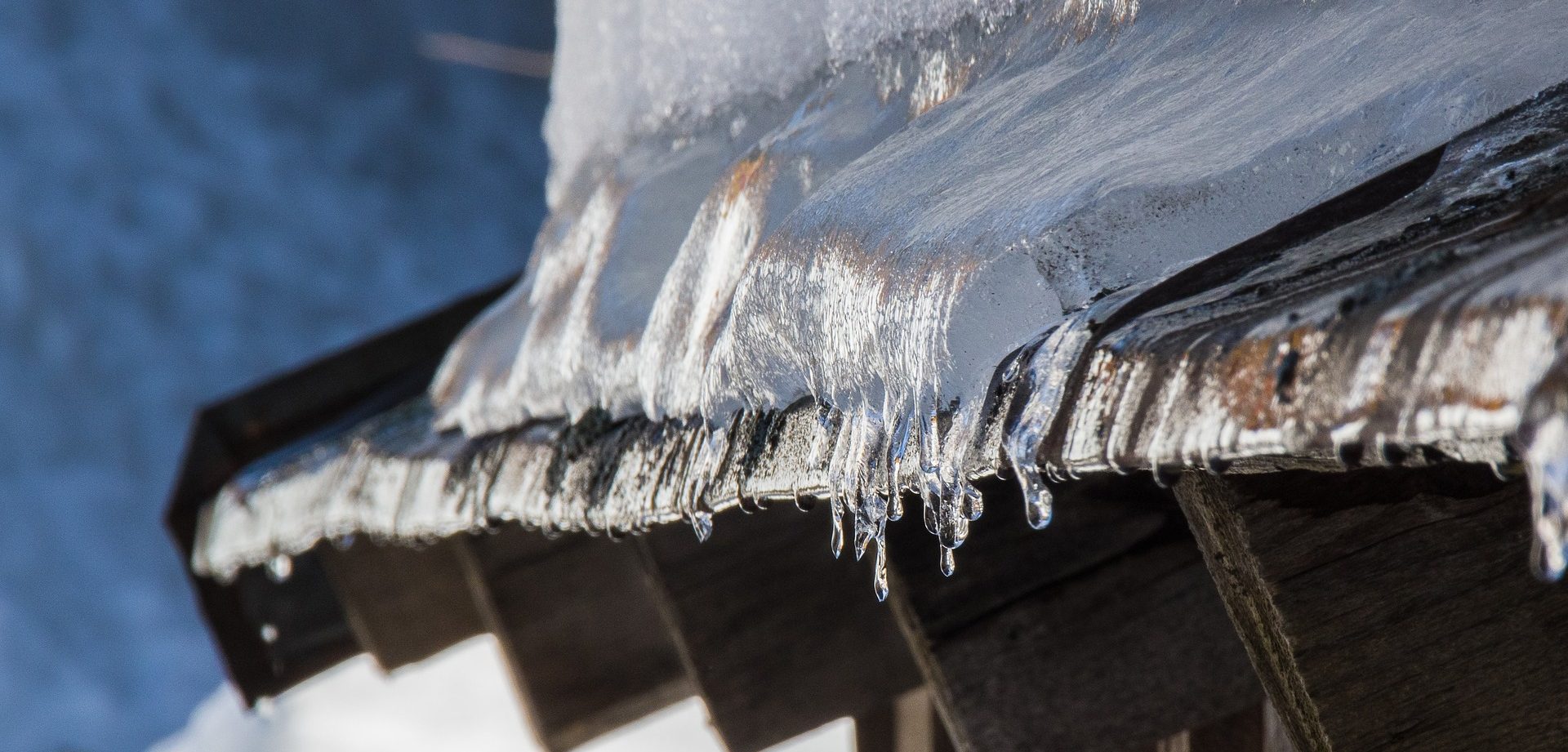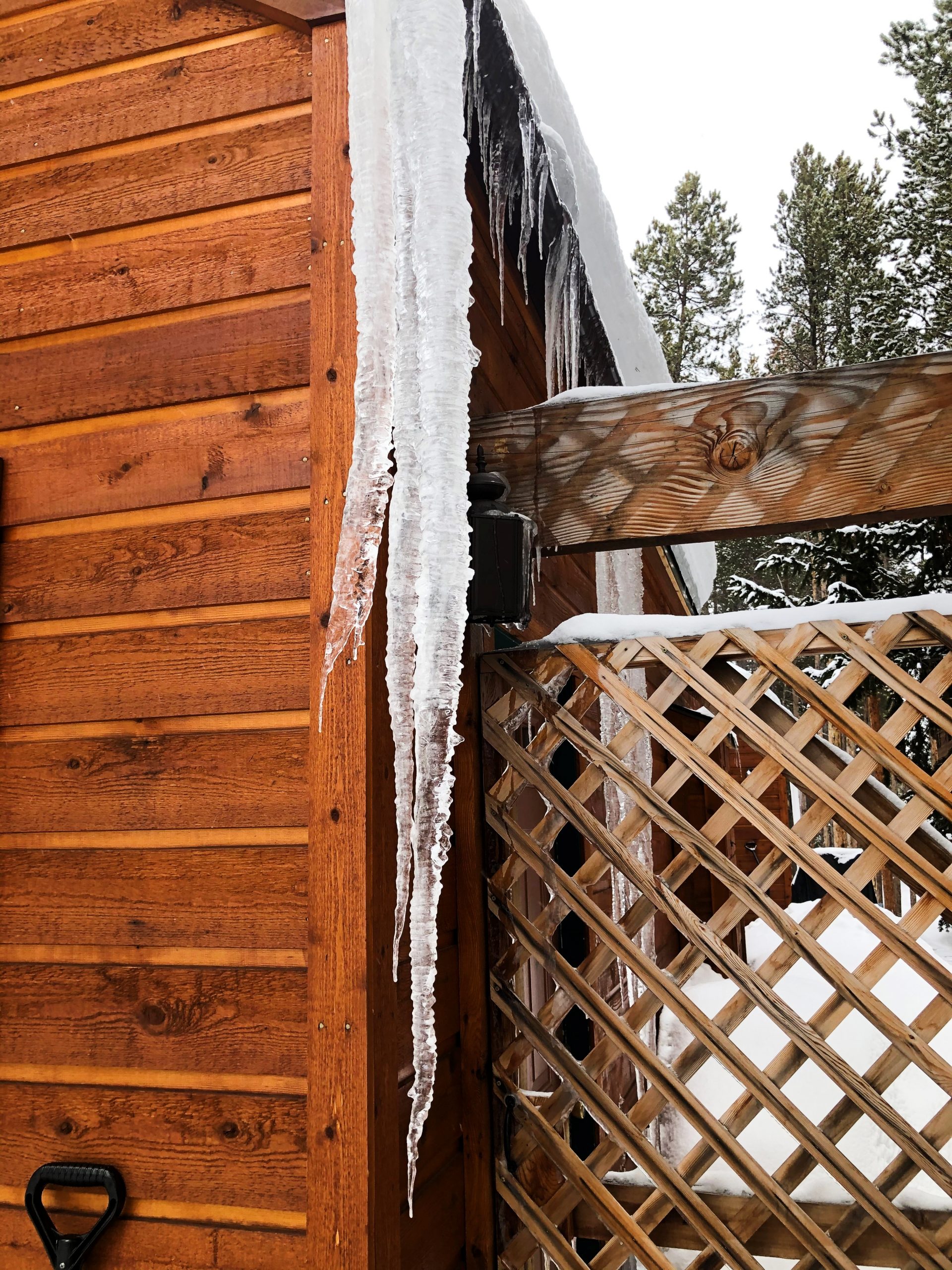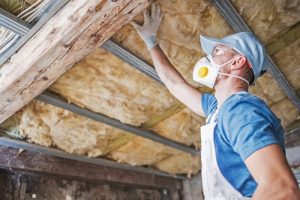
Dear Eartha, Every winter the lower edge of my roof gets covered in a thick sheet of ice. Come spring, massive icicles form that are a pain to deal with, and result in large puddles around my yard. How should I deal with this ice buildup in the future?
Despite their nostalgic wintery appearance, the icicle is in-fact a tell-tale sign of an issue that lies beyond. It’s a signal calling out to us, that our home is not performing several basic functions, that in some cases may even lead to roof failures or leaks. The common term for what you’ve described is the “ice-dam’, a literal wall of ice, that can dam up melting snow from above and force water back into your home. The ice dam is a fickle foe, that literally grows as it dams up more and more roof melt, re-freezes it in place, and wreaks havoc on your home. While ice dams and roof icicles are a common sight across Summit County, I am here to argue, they are not inevitable.

Ultimately, the ice dam is merely a symptom of a deeper issue prevalent across much of our existing housing stock in the mountains. Many contractors will turn to de-icing cable, often referred to as heat tape, to address this symptom through applying heat directly to the affected areas of our roofs. Installing several hundred feet of de-icing cable on the lower sections of your roof, these contractors seem to have saved the day …until you see your utility bill. The harsh truth about de-icing cable is that it uses a lot of electricity – about 6 watts per linear foot at 32 degrees F and even more at lower temperatures. If 100 linear feet of cable is utilized for 6 months of the year, it will consume more than 2,600 Kilowatt hours of electricity at a cost of $300.
With the average Summit County home using around 9,800 kilowatt hours for an entire year, this one appliance could account for roughly 20% of our energy costs! For this reason, we tend to discourage the use of de-icing cable. If you already have heat tape on your home, consider installing a timer to run the heat tape from 6am to 6pm and only when there is snow on the roof. It may seem counter-intuitive, but the best time to run heat tape is during the day when it’s sunny and the temperature is above 32 degrees Fahrenheit.
There are two actions that cause snow to melt on roofs. The primary action is caused when indoor heat is lost through the attic or vaulted ceiling space, heating your roof which in turn causes snow to melt. The melted snow trickles down your roof until it reaches the eave (the section of roof extending beyond your exterior walls). At the eaves, the melted water no longer absorbs the heat loss from the main part of your roof, so it re-freezes and – voila – you have the beginning of an ice dam. As more ice accumulates, it traps water still flowing down the roof, trapping more water behind it. As these dams grow, icicles begin to form from excessive water flowing up over the dam. Ultimately, this water that remains trapped behind the dam may penetrate the roof and manifest as a leak within your home.

The secondary action that causes snow to melt on roofs is sunlight and warmer temperatures. This action however typically affects the entire roof area including the eave, and is less likely to create an ice dam, unless of course, an ice dam is already present. The proper solution to the core cause of ice dams is to reduce indoor heat loss through your roof. I recommend improving your attic or vaulted ceiling insulation and maximizing the roof’s ventilation. What we are after is a roof temperature that always matches the outdoor temperature. Therefore, the insulation in your attic sits down against your ceiling to keep the heated air down where it’s needed in the home. If you have cathedral or vaulted ceilings in your home, the solution remains the same. Ventilation baffles should be installed in your vaulted roofs, conducting outdoor airflow across the underside of your roof sheathing before it exits near the peak of your roof.
When I look out over the rooftops of my neighborhood from the comfort of my living room, I can visibly surmise who has a well-insulated and ventilated attic, simply by who has the most un-melted snow on their roof. This snow is a consistent thickness from the peak to the eave and will naturally melt as one cohesive piece from natural conditions alone, rather than from heat loss through the home itself.
If you’re seriously considering an energy efficiency improvement for your home, or even if you want to learn more about what can be done to reduce the ice dams on your home, you should start with an energy audit of your property. Have a certified building analyst inspect your home for both potential safety concerns and energy efficiency.
Click here to request a home energy audit at your property today. You’ll receive a comprehensive report outlining areas for potential improvement as well as expected annual savings. The most important first step in solving any problems at your home is education. Through a home energy audit, you’ll understand what it is your home truly needs.
